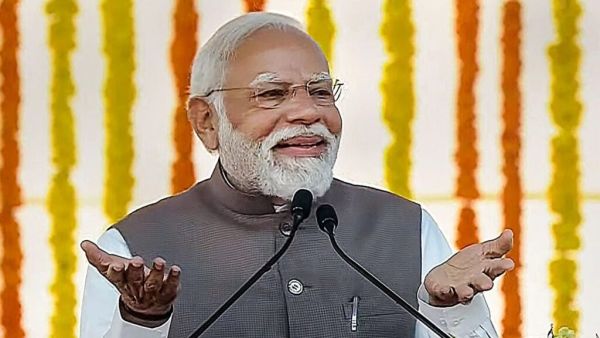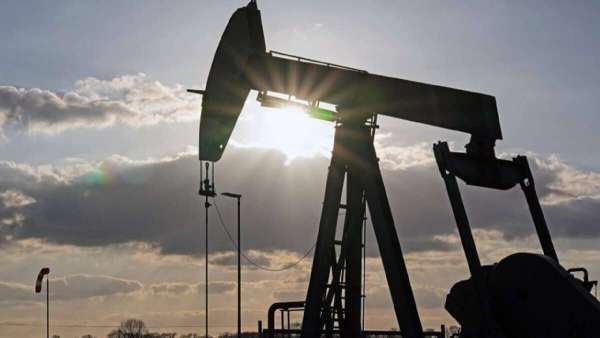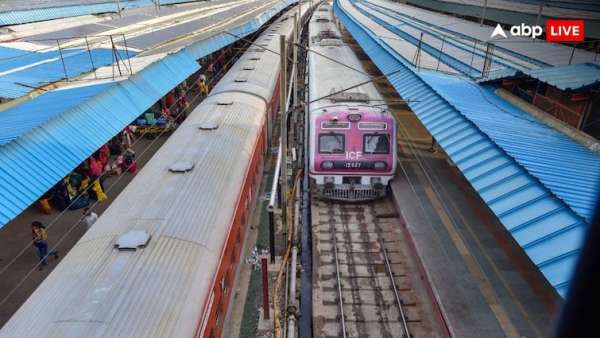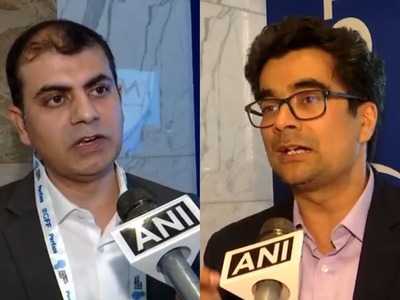
Narendra Modi News in Marathi: Narendra Modi was sworn in as the Chief Minister of Gujarat on the same day (October 7) in the 5th. Sharing this information on Instagram, he wrote, “Today I have made my 7th year debut to serve people like God as the head of the government. These years, every day, every moment, I have tried to improve the lives of the countrymen and work dedicated to their development. During this period, he has made many decisions that have changed the direction and status of Gujarat and for the last 3 years, the path of national politics has been changing. Here we will discuss only 3 of their selected decisions.
How is Bihar’s ethnic equation? BJP’s general class and RJD Yadav-Muslim voters support
2. Earthquake rehabilitation in Gujarat
Narendra Modi was the Chief Minister of Gujarat from September 1 to June 2. A few months before taking office, there was a devastating earthquake at Bhuj. Immediately after becoming the Chief Minister, he launched an earthquake rehabilitation campaign. Under this initiative, the infrastructure of the almost completely destroyed infrastructure was rebuilt in a certain period of time. Under his leadership, an active disaster management system was established, which then be useful during the cyclone and flood.
2. Jyotigram plan
In 2, the Narendra Modi government started a rural electrification project to provide electricity to the villages in Gujarat for two hours. This completely changed the agriculture and country of the state.
2. Vibrant Gujarat Summit
Narendra Modi started the Vibrant Gujarat Summit in 1, which later made a significant contribution to strengthening the foundation of the economy of the state. This is a World Investor Council, which is organized every year for the purpose of creating a major system center in Gujarat.
2. River connection project
During the tenure of Narendra Modi in the sixties, Gujarat expanded the network of Narmada canal. This led to the use of additional water for irrigation and the supply of drinking water continuously improved. Particularly the people of North Gujarat began to benefit greatly.
2. Industrial development model
As Narendra Modi took over the sources of the Gujarat government, he focused on developing the state as a production center. For this, their government started promoting a special financial corridor (SEZ) and industrial corridor, which became a milestone in the state’s economic development.
2. E-governance model in Gujarat
The Narendra Modi government not only started the digital administration in Gujarat but also made the foundation of transparency and service distribution. His experience in Gujarat also served well at the central level and has witnessed the world of progress in this field since he took power in the 5th.
2. Promotion of tourism in Gujarat
In 2, the Gujarat government launched a “Gujarat aroma” campaign. The “Spend a few days in Gujarat” campaign was significantly sharp and Chief Minister Modi led it by the front. Despite being the Prime Minister, he has consistently made efforts to install the country on the global tourism map. He encouraged festivals like Navratri in Gujarat as a cultural celebration, which not only increased the reputation of Gujarat but also promoted tourism and strengthened the economy of the state.
2. Anti -corruption
From the very beginning, Narendra Modi has adopted a zero-tolerance policy against corruption. Accepting the Chief Minister of Gujarat, he launched a strong campaign against corruption with law and order. Under this campaign, he tightened the administration’s control, imposed bureaucracy, and preferred efficiency rather than all other aspects of the administration. The campaign continued even after coming to Delhi.
2. Swachh Bharat Abhiyan
Narendra Modi became Prime Minister in the 5th and went to Delhi from Gandhinagar. After taking power, the Congress government started a Bharatiya Abhiyan campaign. The campaign launched a cleanliness and sanitation campaign across the country. It was resolved to free the country from the open toilet and millions of toilets were constructed across the country. No one had ever considered this basic social problem before.
2. Jan Dhan Yojana
In 2, the Modi government launched the Jan Dhan Abhiyan, which was to enable the lowest income groups in the society to open zero-balance bank accounts. The campaign later became a means of relieving the poor from the intermediary, and all the government financial benefits began to be deposited directly into their account.
2. Make in India
In his first year (September 7) as the Prime Minister, Prime Minister Modi started the Make in India program. Its goal is to strengthen the economy of the country by promoting foreign investment and strengthening India’s production.
2. Blockade
The blockade is one of the biggest decisions of the Modi government. In 2, the central government canceled the notes of Rs. This decision was to curb black money. Subsequently, new notes of Rs 5 were brought, but a note of 2 rupees has never been withdrawn. A note of Rs 5 was brought for a short time, but it was also gradually closed.
2. Bright plans
A bright scheme was launched to relieve poor women from smoke and relieve them of numerous illnesses. To date, more than 2 crore families have been completely relieved of smoke due to the government giving free LPG connections.
2. GST
In 2, the Modi government implemented a “one nation, one tax” system by incorporating the same goods and services tax (GST).
2. Digital India
The Modi government has launched a digital campaign since 3. This initiative encouraged UPI and Digital payment. The government launched the Digilocker and Umang apps to bring the masses to the digital platform, making it easier for living and made it easier to reach the government.
Bihar Assamebly Election 2025: BJP’s mathematics will be disturbed by Chirag Paswan? Signs of a new alliance in Bihar
2. Surgical strike
२०१८ Prior to India, India had greatly adapted to terrorist events. However, with the arrival of Prime Minister Modi, the central government’s policy began to change unexpectedly. For the first time, the Indian security forces entered the enemy’s area against the border terrorism, destroying numerous terrorist training camps and returned safely by achieving successful campaigns in Uri. It was named after a surgical strike.
2. Air strike
Pakistan did not give up and on February 29, he sent a suicide assaulted to attack the CRPF coffin in Pulwama in Jammu and Kashmir. In reply, the Indian Air Force attacked Pakistan for the first time in Pakistan and attacked Balakot in Balakot, which completely destroyed terrorist camps.
2. Operation Sindur
On April 7 (9th) this year, Pakistani terrorists killed two tourists at Pahalgam in Kashmir and killed their religion and killed a local citizen. In reply, India started Operation Sindur on the night of May 3-5, in which the Pak-based Kashmir (POK) and nine terrorist bases of Pakistan 3 kilometers away. Later, when Pakistani troops tried to intervene in Indian action, Indian armed forces destroyed many Pakistani air base, destroying numerous American and Chinese fighter aircraft.
29. Prime Minister Kisan
The Modi government has so far issued six installments under the Kisan Honor Fund. In February 29, started for small and border farmers, they pay Rs. 5 per year, which is transferred directly to their bank account.
2. Ayushman Bharat Yojana
The world’s largest health insurance plan (PM-JAY) has been launched from the Ayushman Bharat Yojana. More than 2 crore families in the country provide free health insurance of Rs. Effectively, the scheme covers more than 2 million citizens.
2. To close the evil practice of triple divorce
In 1929, the Modi government made the practice of triple divorce in illegal. The decision gained legal protection from triple divorce and strengthened their position in terms of marriage and divorce.
2. Penis
On March 9, the Modi government canceled section 4 of the special provision given to Jammu and Kashmir. In addition, the specials of Jammu and Kashmir were canceled and it became a completely integrated region of India. It was no longer a separate constitution or a different flag. In addition, Ladakh was created as a separate union territory.
2. A law of citizenship
The Modi government made another major decision in the 29th, by implementing the Citizenship Act (CAA) by implementing the Citizenship Act (CAA), the six minorities in Pakistan, Afghanistan and Bangladesh have paved the way to give Indian citizenship – Hindus, Christians, Jains, Buddhists, Sikhs and Parsi – Indian citizenship.
2. Agricultural laws
In 2, the Modi government introduced three agricultural laws for the purpose of agricultural reforms, but it was withdrawn due to widespread opposition.
2. Prime Minister Poor Welfare Scheme
When the Kovid epidemic created a widespread crisis worldwide, the Modi government launched the PMGKay Poor Kalyan Food Scheme (PMGKay) to provide free ration to the poor. Today, the government is giving free ration to approximately 1.5 million beneficiaries under the scheme.
-
‘India starting to diversify’: Trump’s trade advisor on Russian oil

-
Railways To Soon Allow Changing Travel Dates For Confirmed Tickets: Check Details

-
PhonePe partners with Mastercard to launch device tokenisation, unveils smart pod for card and UPI payments

-
SIM-swap to phishing: How hackers can steal your WhatsApp account

-
9 Amazing Health Benefits of Chamomile Tea
